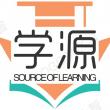
国际经济学(汉英对照21世纪高等学校国际经济与贸易系列规划教材)
全新正版 极速发货
¥ 39 6.6折 ¥ 59 全新
库存2件
作者编者:谢孟军|责编:李晨//朱玲
出版社浙江大学
ISBN9787308188234
出版时间2020-12
装帧平装
开本其他
定价59元
货号31044768
上书时间2025-01-07
- 最新上架
商品详情
- 品相描述:全新
- 商品描述
-
作者简介
目录
Chapter 1 Introduction
1.1 What Is International Economics About
1.2 The Gains from Trade
1.3 The Pattern of Trade
1.4 Protectionism
1.5 Balance of Payments
1.6 Exchange Rate Determination
1.7 International Policy Coordination
1.8 The International Capital Market
1.9 International Economics:Trade and Finance
1.10 Has the World Gotten Smaller
1.11 Do Old Rules Still Apply
Chapter 2 Classical Theories of International Trade
2.1 Mercantilism
2.2 Absolute Advantage:Adam Smith
2.3 Comparative Advantage:David Ricardo
2.4 Comparative Advantage and Opportunity Cost
2.5 Comparative Advantage with More Than Two Commodities and Countries
Chapter 3 New Classical Theories of International Trade
3.1 H—O Theory
3.2 The Stolper—Samuelson Theorem
3.3 Factor—price Equalization
3.4 The Rybczynski Theorem
3.5 The Leontief Paradox
3.6 Specific Factor Model
Chapter 4 Modern Trade Theory
4.1 Inter—industry Trade and Intra—industry Trade
4.2 Product Life Cycle Theory
4.3 Theory of Overlapping Demands
4.4 Economies of Scale
4.5 Reciprocal Dumping Model
Chapter 5 International Factor Movements Theory
5.1 International Movement of Labor
5.2 International Movement of Capital
5.3 Economic Analysis of International Labor and Capital Movement
Chapter 6 Tariffs
6.1 Theories for Trade Protection
6.2 Tariffs
6.3 Effect of a Tariff on Consumer and Producer Surplus
Chapter 7 Non—tariff Trade Barriers
7.1 An Introduction to Non—tariff Trade Barriers
7.2 Import Quota
7.3 Export Subsidy
7.4 Dumping
7.5 Voluntary Export Restraints
7.6 Local Content Requirements
7.7 Other Trade Policy Instruments
Chapter 8 Trade Policies for Developing Nations
8.1 Developing—nation Trade Characteristics
8.2 The Problem of Developing Nations
8.3 Generalized System of Preferences
8.4 Stabilizing Primary Product Price
8.5 Err]nomics Growth Strategjes
Chapter 9 Trade Policies for Developed Nations
9.1 Strategic Trade Policy
9.2 Ec。nomic Sancti。n s;
9.3 Protection of Intellectual Property Rights
9.4 Industrial Policies。f United States
9.5 Industrial Policies of Japan
Chapter 10 Regional Trade Agreements
10.1 Types of Regional Trade Agreements
10.2 Effects。f Cust。ms Uni
10.3 Practices。f Regional Integrati
Chapter 11 Balance of Payments
11.1 The Nati。nal InCOrne Accounts
1l.2 The Fundamental Balance of Payments Identity
Chapter 12 Money,Interest Rates,an0 Exchange Rates
12.1 M。ney Deftned:a Brief RevieW
12.2 M。neY Supply and M。neY Demand
12.3 The Money Supply and the Exchange Rate in the Short Run
12.4 M。ney,the Price Level,and the Exchange Rate in the L。ng Run
Chapter 13 Financial Globalization:Opportunity and Crisis
13.1 The International Capital Market and the Gains from Trade
1 3.2 Internati。nal Banking and the Internati。nal Capital Market
13.3 Regulating International Banking
13.4 How Well HaVe International Financial Markets Allocated Capital and Ris
References
内容摘要
本教材的主要特色是汉英对照。与国外原版英文教材相比,本教材保持了英文表述的原汁原味,同时为了更好地满足国内读者的需求,教材的章节标题、关键词和知识点等都配有中文注释,以便读者能够更快地理解教材内容并掌握重点知识;与国内中文教材相比,本教材基于当前世界政治、经济、
文化的国际背景,用英文表述国际经济学的课程内容,尽量保持国内外知识的同步,教材空白处的设计可以留给学生做笔记或翻译之用。本教材共13章,包括国际贸易理论、国际贸易政策和国际金融三部分内容。其中第1章为引言,主要介绍当前的国际经济背景及教材的总体内容和框架体系;第2章至第5章为国际贸易理论部分,主要介绍经典的国际贸易理论及当代具有代表性的国际贸易理论,从多角度、多层面来解释商品和生
产要素国际流动的原因;第6章至第10章为国际贸易政策部分,主要介绍国际贸易中的两类工具(关税和非关税贸易壁垒)、两类国家(发展中国家和发达国家)的贸易政策,以及国际社会中的一类组织(区域性贸易合作组织);第11章至13章为国际金融部分,主要介绍货币国际流动的现状、原因及应对策略。
主编推荐本书共分八章,内容包括国际经济法概述、国际经济法的主体、国际货物买卖法律制度、国际知识产权与技术转让法、国际服务贸易法律制度、国际贸易管理法律制度、国际税法、世界贸易组织争端解决制度。
本书不仅适合高等院校法学专业本科生的基础性学习,还可作为高等院校商务英语、国际贸易、国际金融等专业的选修教材。同时,本书也可作为国际商务工作者、涉外法律实务者的自学教材。
【目录】
— 没有更多了 —












以下为对购买帮助不大的评价